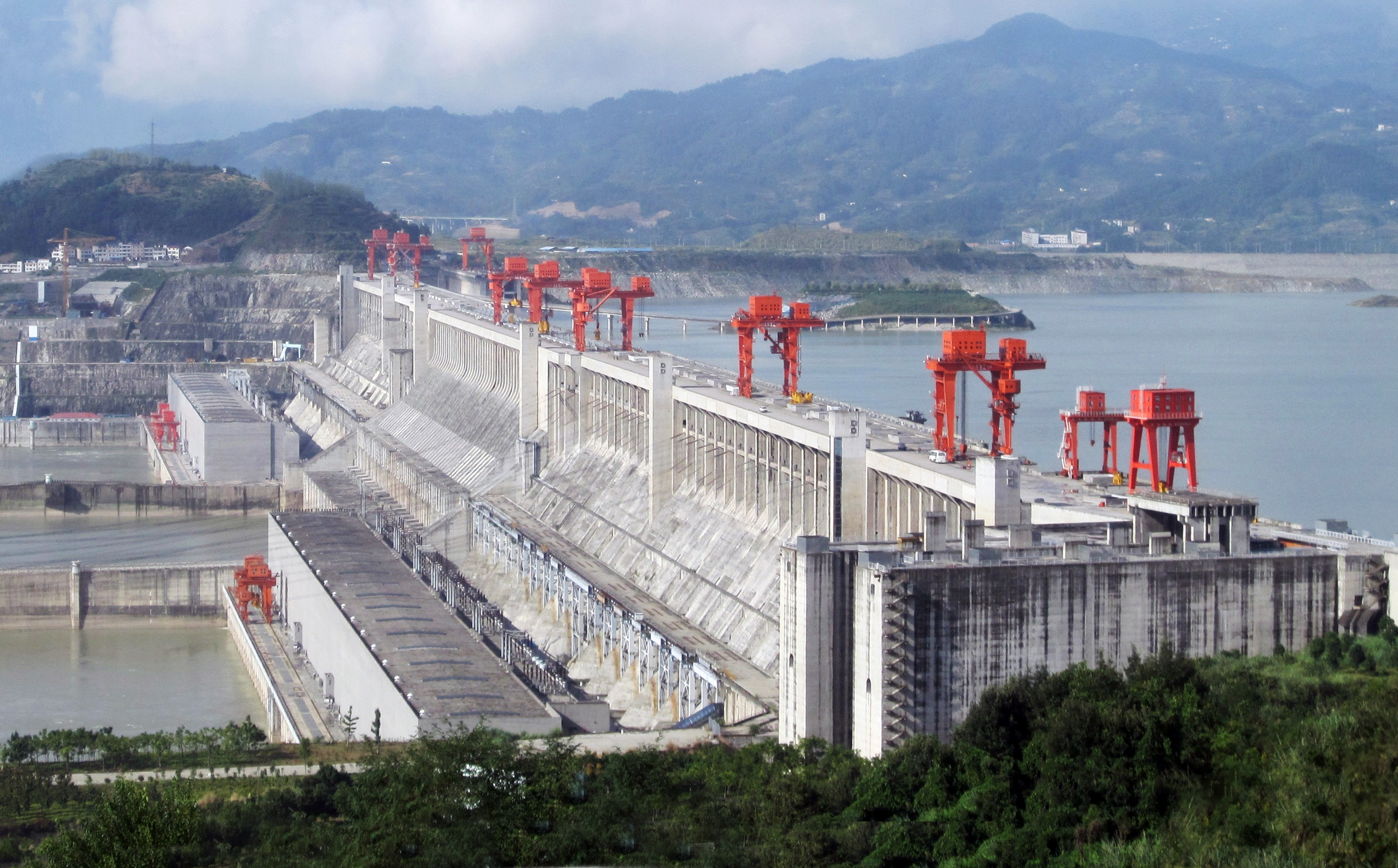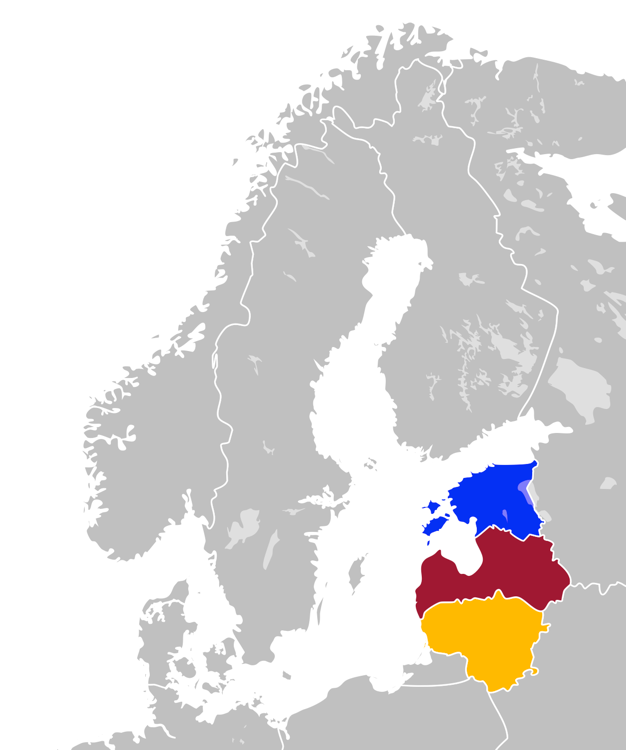|
Kruonis Pumped Storage Plant
Kruonis Pumped Storage Plant (the KPSP) is located near Kruonis, Lithuania, east of Kaunas. Its main purpose is to provide grid energy storage. It operates in conjunction with the Kaunas Hydroelectric Power Plant. During periods of low demand, usually at night, Kruonis PSHP raises water from the lower Kaunas reservoir to the upper one using cheap surplus energy. The station is designed to have an installed capacity of 1,600 MW but only four 225 MW generators are currently operational. With a fully filled upper reservoir the plant can generate 900 MW for about 12 hours. The KPSP uses hydro-resources of artificial water pools existing at different geographical levels. The electricity from this power plant is supplied to a 330 kV electricity line to Elektrėnai, where the largest fossil fuel plant in Lithuania is operating, and Kaunas. During a surplus of electricity generation, the KPSP uses the surplus electricity to pump water from the lower pool to the upper pool. During ... [...More Info...] [...Related Items...] OR: [Wikipedia] [Google] [Baidu] |
Kruonis
Kruonis ( pl, Kronie, yi, קראָן, ''Kron'') is a small town, located east of Kaunas, in Kaunas County, central Lithuania. The name of Kruonis comes from a small creek ''Kruonė''. In 2011 it had a population of 661. The center of Kruonis is a state-protected urbanistic monument. The only in the Baltic States Kruonis Pumped Storage Plant (the KPSP) is situated north of Kruonis. Each year a music festival ''Renesanso naktys Kruonyje'' (''The Nights of Renaissance in Kruonis'') takes place in the church where the classical music of the composers of 16th-17th centuries being performed. History In the 15th century, a small settlement started to establish itself around the Kruonis' manor of the Grand Duke of Lithuania. The first church was built in Kruonis by Kazimieras Jogailaitis in 1472. It was built in the Catholic cemetery, using wood. Current Catholic church is located in the building which was built as a Uniate church in 1626 by the colonel of the Grand Duchy of ... [...More Info...] [...Related Items...] OR: [Wikipedia] [Google] [Baidu] |
Elektrėnai
Elektrėnai () is a city of about 11,000 inhabitants in Lithuania; since 2000 it has been the capital of the Elektrėnai Municipality. It is situated between the two largest cities in Lithuania – Vilnius and Kaunas. History Elektrėnai is one of the newest towns of Lithuania, having been established during the Soviet times as the living space for workers of the nearby power plant. The name of the new town was derived from word "elektrinė" (English: ''electric plant''). Most of the buildings in Elektrėnai are large monolith housing projects built during the Soviet times and there are no historical buildings. The town, however, is close to Elektrėnai Reservoir, an artificial lake that was created in order to cool down the Elektrėnai Power Plant. The water is several degrees warmer than water at the other nearby lakes. Retail There are several supermarkets ( Norfa XXL, Maxima XX, Iki, Lidl, as well as a discounter (IKI Cento) in Elektrėnai. Ice hockey Elektrėnai is well k ... [...More Info...] [...Related Items...] OR: [Wikipedia] [Google] [Baidu] |
Hydroelectric Power Stations Built In The Soviet Union
Hydroelectricity, or hydroelectric power, is electricity generated from hydropower (water power). Hydropower supplies one sixth of the world's electricity, almost 4500 TWh in 2020, which is more than all other renewable sources combined and also more than nuclear power. Hydropower can provide large amounts of low-carbon electricity on demand, making it a key element for creating secure and clean electricity supply systems. A hydroelectric power station that has a dam and reservoir is a flexible source, since the amount of electricity produced can be increased or decreased in seconds or minutes in response to varying electricity demand. Once a hydroelectric complex is constructed, it produces no direct waste, and almost always emits considerably less greenhouse gas than fossil fuel-powered energy plants. [...More Info...] [...Related Items...] OR: [Wikipedia] [Google] [Baidu] |
Pumped-storage Hydroelectric Power Stations In Lithuania
Pumped-storage hydroelectricity (PSH), or pumped hydroelectric energy storage (PHES), is a type of hydroelectric energy storage used by electric power systems for load balancing. The method stores energy in the form of gravitational potential energy of water, pumped from a lower elevation reservoir to a higher elevation. Low-cost surplus off-peak electric power is typically used to run the pumps. During periods of high electrical demand, the stored water is released through turbines to produce electric power. Although the losses of the pumping process make the plant a net consumer of energy overall, the system increases revenue by selling more electricity during periods of peak demand, when electricity prices are highest. If the upper lake collects significant rainfall or is fed by a river then the plant may be a net energy producer in the manner of a traditional hydroelectric plant. Pumped-storage hydroelectricity allows energy from intermittent sources (such as solar, win ... [...More Info...] [...Related Items...] OR: [Wikipedia] [Google] [Baidu] |
List Of Pumped-storage Hydroelectric Power Stations
The following page lists all pumped-storage hydroelectric power stations that are larger than in installed generating capacity, which are currently operational or under construction. Those power stations that are smaller than , and those that are decommissioned or only at a planning/proposal stage may be found in regional lists, listed at the end of the page. List of plants larger than 1000 MW capacity The table below lists currently operational power stations. Some of these may have additional units under construction, but only current installed capacity is listed. Under construction This table lists future 1,000 MW or larger stations that are under construction; some may be partially operational with a current installed capacity under 1,000 MW. See also * List of energy storage projects * List of hydroelectric power station failures * Lists of hydroelectric power stations * List of largest power stations * United States Department of Energy Global E ... [...More Info...] [...Related Items...] OR: [Wikipedia] [Google] [Baidu] |
Baltic States
The Baltic states, et, Balti riigid or the Baltic countries is a geopolitical term, which currently is used to group three countries: Estonia, Latvia, and Lithuania. All three countries are members of NATO, the European Union, the Eurozone, and the OECD. The three sovereign states on the eastern coast of the Baltic Sea are sometimes referred to as the "Baltic nations", less often and in historical circumstances also as the "Baltic republics", the "Baltic lands", or simply the Baltics. All three Baltic countries are classified as high-income economies by the World Bank and maintain a very high Human Development Index. The three governments engage in intergovernmental and parliamentary cooperation. There is also frequent cooperation in foreign and security policy, defence, energy, and transportation. The term "Baltic states" ("countries", "nations", or similar) cannot be used unambiguously in the context of cultural areas, national identity, or language. While the majori ... [...More Info...] [...Related Items...] OR: [Wikipedia] [Google] [Baidu] |
Pumped-storage Hydroelectricity
Pumped-storage hydroelectricity (PSH), or pumped hydroelectric energy storage (PHES), is a type of hydroelectric energy storage used by electric power systems for load balancing. The method stores energy in the form of gravitational potential energy of water, pumped from a lower elevation reservoir to a higher elevation. Low-cost surplus off-peak electric power is typically used to run the pumps. During periods of high electrical demand, the stored water is released through turbines to produce electric power. Although the losses of the pumping process make the plant a net consumer of energy overall, the system increases revenue by selling more electricity during periods of peak demand, when electricity prices are highest. If the upper lake collects significant rainfall or is fed by a river then the plant may be a net energy producer in the manner of a traditional hydroelectric plant. Pumped-storage hydroelectricity allows energy from intermittent sources (such as solar, ... [...More Info...] [...Related Items...] OR: [Wikipedia] [Google] [Baidu] |
Elektrėnai Power Plant
The Elektrėnai Power Plant or Lithuania Power Plant ( lt, Lietuvos elektrinė) is an 1055 MW electrical generating station near Elektrėnai, Lithuania, about west of Lithuania's capital, Vilnius. It is operated by Lietuvos Elektrinė, a subsidiary of Lietuvos Energija. The plant was built in stages between 1960 and 1972. The Strėva River was dammed to supply it with cooling water, creating the Elektrėnai Reservoir. As of 2008 the plant comprised eight units fired with natural gas, heavy fuel oil, and a bitumen-based fuel known as Orimulsion, imported from Venezuela. It was designed as a base load plant, and generated about 10 TWh per year until 1992. Its operations were then reduced to about 5% of its capacity, since it acted only as a reserve in the Lithuanian power system. In 2012 9th block had been opened. After the shutdown of the Ignalina nuclear power plant in 2009, the plant became the primary source of Lithuania's electrical power. Since the plant do ... [...More Info...] [...Related Items...] OR: [Wikipedia] [Google] [Baidu] |
Hydroelectric
Hydroelectricity, or hydroelectric power, is electricity generated from hydropower (water power). Hydropower supplies one sixth of the world's electricity, almost 4500 TWh in 2020, which is more than all other renewable sources combined and also more than nuclear power. Hydropower can provide large amounts of low-carbon electricity on demand, making it a key element for creating secure and clean electricity supply systems. A hydroelectric power station that has a dam and reservoir is a flexible source, since the amount of electricity produced can be increased or decreased in seconds or minutes in response to varying electricity demand. Once a hydroelectric complex is constructed, it produces no direct waste, and almost always emits considerably less greenhouse gas than fossil fuel-powered energy plants. [...More Info...] [...Related Items...] OR: [Wikipedia] [Google] [Baidu] |
Kaunas Reservoir
Kaunas Reservoir ( lt, Kauno marios, Kaunas Lagoon, Kaunas Sea) is the largest Lithuanian artificial lake, created in 1959 by damming the Nemunas River near Kaunas and Rumšiškės. It occupies 63.5 square kilometers, which is about 0.1% of the total territory of Lithuania. The reservoir supports the operations of the Kaunas Hydroelectric Power Plant. Its waters cover the Nemunas valley from the river's confluence with Strėva River to the dam, a distance of about 25 kilometers. The greatest width of the reservoir is 3.3 kilometers and its greatest depth is 22 meters. The reservoir also supports the operations of 900MW Kruonis Pumped Storage Plant, which is situated near confluence with Strėva River. In 1992, in order to protect the local environment and cultural heritage, Kaunas Reservoir Regional Park was established. A yacht club operates in the park. Gallery Sites flooded by the Kaunas Reservoir In anticipation of the reservoir's creation, 721 farms and villages were ... [...More Info...] [...Related Items...] OR: [Wikipedia] [Google] [Baidu] |
Kaunas Hydroelectric Power Plant
The Kaunas Hydroelectric Power Plant, located on the Nemunas River about southeast of central Kaunas, Lithuania, was completed in 1960. Its dam created the Kaunas Reservoir. Owned by Lietuvos Energija, it operates in conjunction with the Kruonis Pumped Storage Plant. The plant, which has a capacity of 101 megawatts. Supplies about 3% of the electrical demand in Lithuania. A renovation was begun in 2005, with work to be performed in partnership with the multinational conglomerate Alstom Alstom SA is a French multinational rolling stock manufacturer operating worldwide in rail transport markets, active in the fields of passenger transportation, signalling, and locomotives, with products including the AGV, TGV, Eurostar, Avelia .... The first phase was completed in November 2008; completion is scheduled for the end of 2009. References External links Hydroelectric power stations in Lithuania Buildings and structures in Kaunas Hydroelectric power stations built in th ... [...More Info...] [...Related Items...] OR: [Wikipedia] [Google] [Baidu] |


.jpg)


